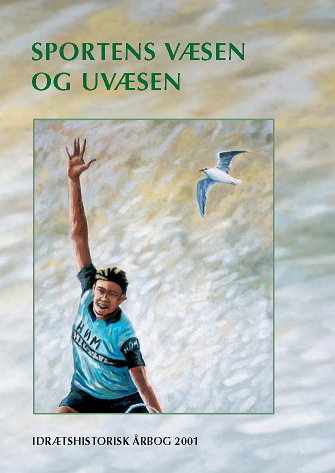Fjenden hedder Medailler
DOI:
https://doi.org/10.7146/ffi.v17i0.31734Resumé
Idrætshistorisk beskrivelse af idrættens udviklingen og sportificering i slutningen af det 19. århundrede med atletikken i København som eksempel.
The Enemy’s name is Medals
Around 1900 the connection between sport and outdoor life began to loosen in the sports clubs in Copenhagen. Buildings for indoor sporting activities were constructed and ideas of sporting practice changed. In the first major book about sports in Denmark in the 20th century, Idrætsbogen (Book of Sports) from 1909, American ideas of training which included diet and style of life were rejected, but in the next major book “Den danske Idræts Bog” (Book of Danish Sport) from 1935, training was defined as “systematic practice and a carefully measured way of life”. The idea of sport as an activity that affected a whole way of life was connected to the movement towards indoor sporting activities and both were central parts of a sportification process. The movement had a gender dimension as sportsmen in Copenhagen began to evolve team handball as an indoor wintergame, while female sports clubs practised gymnastics in wintertime and outdoor handball in the summer.
Downloads
Publiceret
Citation/Eksport
Nummer
Sektion
Licens
Forfattere, der publicerer deres værker via dette tidsskrift, accepterer følgende vilkår:
- Forfattere bevarer deres ophavsret og giver tidsskriftet ret til første publicering, samtidigt med at værket er omfattet af en Creative Commons Attribution-licens, der giver andre ret til at dele værket med en anerkendelse af værkets forfatter og første publicering i nærværende tidsskrift.
- Forfattere kan indgå flere separate kontraktlige aftaler om ikke-eksklusiv distribution af tidsskriftets publicerede version af værket (f.eks. sende det til et institutionslager eller udgive det i en bog), med en anerkendelse af værkets første publicering i nærværende tidsskrift.
- Forfattere har ret til og opfordres til at publicere deres værker online (f.eks. i institutionslagre eller på deres websted) forud for og under manuskriptprocessen, da dette kan føre til produktive udvekslinger, samt tidligere og større citater fra publicerede værker (se The Effect of Open Access).





